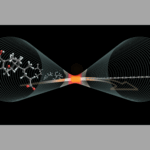2025-05-06 北京大学(PKU)
 Two-step pollination mechanism in self-pollinating plants of the Brassicaceae family.
Two-step pollination mechanism in self-pollinating plants of the Brassicaceae family.
<関連情報>
- https://newsen.pku.edu.cn/news_events/news/research/14893.html
- https://www.cell.com/cell/fulltext/S0092-8674(25)00294-6
アブラナ科植物における2段階の自家受粉メカニズムが繁殖力を最大化する A two-step self-pollination mechanism maximizes fertility in Brassicaceae
Pu Liu ∙ Xin Quan ∙ Zihan Song ∙ … ∙ Thomas Dresselhaus ∙ Sheng Zhong ∙ Li-Jia Qu
Cell Published:April 14, 2025
DOI:https://doi.org/10.1016/j.cell.2025.03.021
Highlights
- A two-step self-pollination process is discovered in Arabidopsis thaliana
- Flower closure and alternating filament/pistil elongation double pollen deposition
- Reinforcement of pollen quantity improves plant fertility under adverse conditions
- This pollination mechanism also occurs in other self-pollinating Brassicaceae species
Summary
Self-pollination in self-compatible plant species often occurs prior to flower opening. By tracking the temporal progress of pollination in Arabidopsis, we observed that pollen predominantly targets the lateral region of the stigma in unopened flowers. Notably, approximately 7 h after flower opening, flowers close, thereby pressing anthers toward the central region of the stigma for a second self-pollination. This two-step self-pollination results in a doubling of pollen deposition, which significantly increases the ovule-targeting ratio and improves fertility under pollen-limiting conditions, as evident in the anther-dehiscence-defective mutant myb108 and under environmental stress conditions. Analysis using gamete-interaction-defective mutants hap2/gcs1 and dmp8 dmp9 revealed that the timely separation of both pollination events promotes fertilization recovery efficiency. A similar two-step pollination was observed in two other self-pollinating but not in outcrossing Brassicaceae species. This mechanism represents a reproductive assurance strategy in predominantly self-pollinating annuals to maximize fertility under unfavorable conditions.



